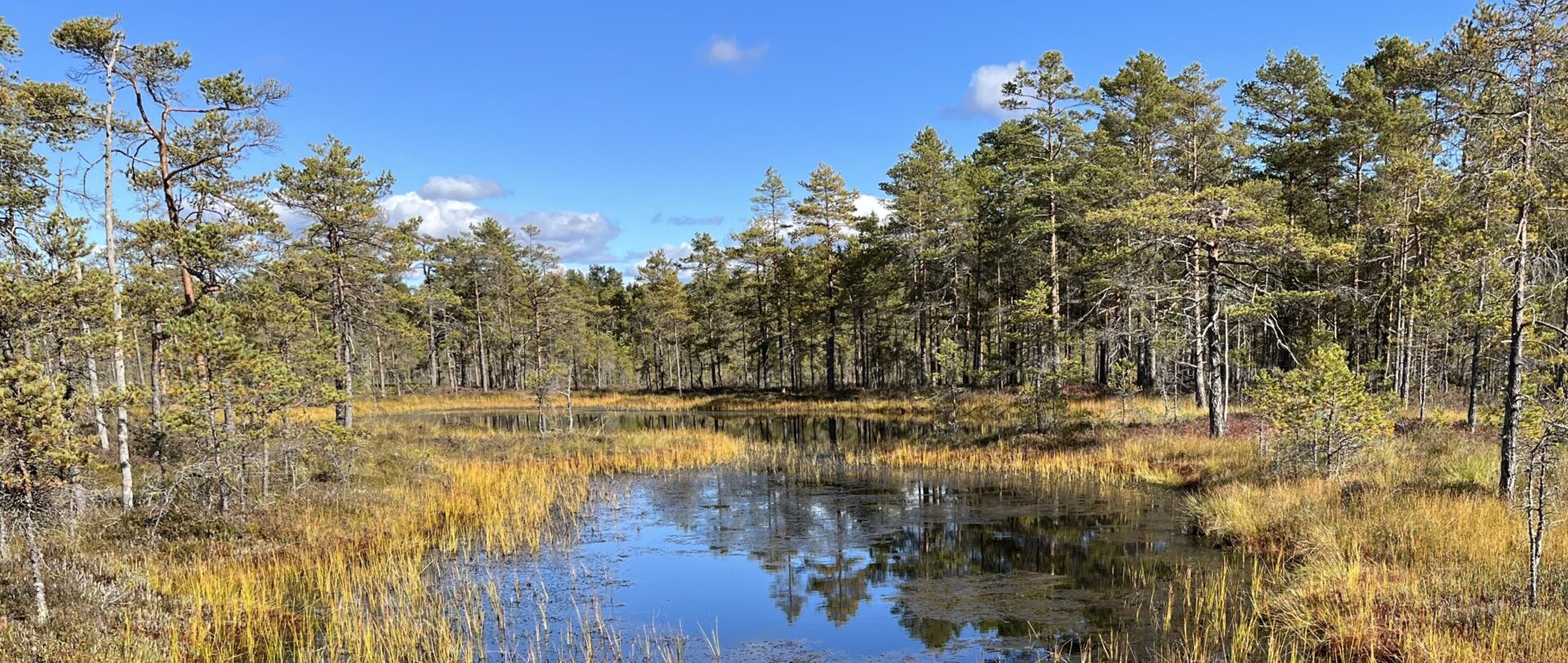Large-scale export of aquatic carbon from peatlands

Project description
Peatlands are wetland environments in which saturated, anoxic soil conditions cause carbon-rich plant detritus – peat – to accumulate over thousands of years. Peatlands are thought to store approximately one third of global soil carbon, and in doing so provide globally-important climate regulation services. However, peatland carbon budgets are sensitive to changes in environmental factors such as climate, soil wetness and land use. As well as storing large amounts of carbon, peatlands also emit greenhouse gases to the atmosphere, particularly carbon dioxide and methane; and release dissolved organic carbon (DOC) and dissolved gases into downstream water courses. The export of peat-derived DOC not only contributes to ocean acidification, but in countries such as the UK, where significant amounts of drinking water are sourced from peat-rich upland catchments (Xu et al., 2018), it necessitates expensive water treatment procedures.
It is estimated that wetlands and inland open water bodies produce up to half of all global methane emissions. Peatlands, in particular, are hotspots of methane emissions due to their high carbon content and anoxic conditions. However, these flux estimates are highly uncertain. Robust estimates of large-scale inland water and peatland methane emissions are hindered by a dearth of measurements. What measurements do exist are typically concentrated in a few heavily-studied water bodies and tend to neglect emissions via ebullition.
The supervisors of this project have previously developed a modelling framework, the first of its kind, that simulates the production and fluvial export of peat-derived DOC (Xu et al., 2020). We showed that ongoing and future climate change is likely lead to strong increases in peat-derived DOC in drinking water sources in the UK in the coming decades, particularly in the autumn. The model was developed and tested for nine well-instrumented UK catchments, but an opportunity exists to extend the modelling approach to make robust estimates of peat-derived DOC flux in poorly-instrumented or un-instrumented catchments, and to extend the model to simulate aquatic methane flux. To do so, this project will take advantage of scaling approaches, also developed by the supervision team (Maavara et al., 2023), to predict DOC fluxes at high spatiotemporal resolution across large catchments. Additionally, we will develop a new model component that predicts methane emissions from each river reach, calibrated using the newly published Global River Methane Database of concentrations and fluxes, GRiMeDB (Stanley et al., 2023). This combination of methods will enable estimates of national, continental and even global budgets for peat-derived aquatic carbon export.
The project will address three primary aims:
- Extend the existing modelling framework to simulate peat-derived DOC export from un-instrumented catchments.
- Develop and validate a methane-flux component, and incorporate this into the existing DOC modelling framework.
- Apply the new model to un-instrumented, peat-rich catchments to predict large-scale (e.g., national, continental or global) export of peat-derived DOC and methane emissions.
The three aims will form the basis of thesis chapters, as well as articles for major, international journals, which the student will write under the guidance of the supervisors.
Candidate profile
The student should have a keen interest in environmental issues around water quality and terrestrial greenhouse gas fluxes, and a strong background in a physical geography, Earth sciences, plant sciences, environmental sciences or a related discipline. The candidate should also have skills in numerical modelling, and data handling and analysis. Some prior knowledge of peatland science, and experience in the field, are desirable but not essential.
Training
The student will work under the supervision of Prof. Joe Holden, Dr. Paul Morris and Dr. Taylor Maavara in the School of Geography, where they will become a member of the River Basins Processes and Management research cluster. Dr. Jiren Xu (University of Glasgow) will be an external supervisor. The project will provide the student with high-level training in (i) peatland hydrological and biogeochemical processes; (ii) numerical modelling; (iii) advanced skills in data handling and statistical analysis; and (iv) scientific writing and communication. The student will be supported throughout by a comprehensive PGR skills training programme that will focus on developing knowledge and intellectual abilities; personal effectiveness; research governance and organisation; and engagement, influence and impact. Training needs will be assessed at the beginning of the project and at key stages throughout the project and the student will be encouraged to participate in the numerous training and development course that are run within the university to support PGR students, including statistics training (e.g. R, SPSS), academic writing skills, grant writing etc. Supervision will involve regular meetings with all supervisors, and further guidance from a research support group.
References
Xu J, Morris PJ, Liu J, Holden J (2018) Hotspots of peatland-derived potable water use identified by global analysis. Nature Sustainability, 1: 246–253.
Xu J, Morris PJ, Liu J, Ledesma JLJ, Holden J (2020) Increased dissolved organic carbon concentrations in peat‐fed UK water supplies under future climate and sulfate deposition scenarios. Water Resources Research, 56: e2019WR025592.
Maavara, T., Brinkerhoff, C., Hosen, J., Aho, K., Logozzo, L., Saiers, J., Stubbins, A., Raymond, P.A. (2023). Watershed DOC uptake occurs mostly in lakes in summer and in rivers in winter. Limnology & Oceanography 68: 735–751.
Stanley, E. H., Loken, L. C., Casson, N. J., Oliver, S. K., Sponseller, R. A., Wallin, M. B., Zhang, L., Rocher-Ros, G. (2023) GRiMeDB: the Global River Methane Database of concentrations and fluxes. Earth System Science Data, 15: 2879–2926.
